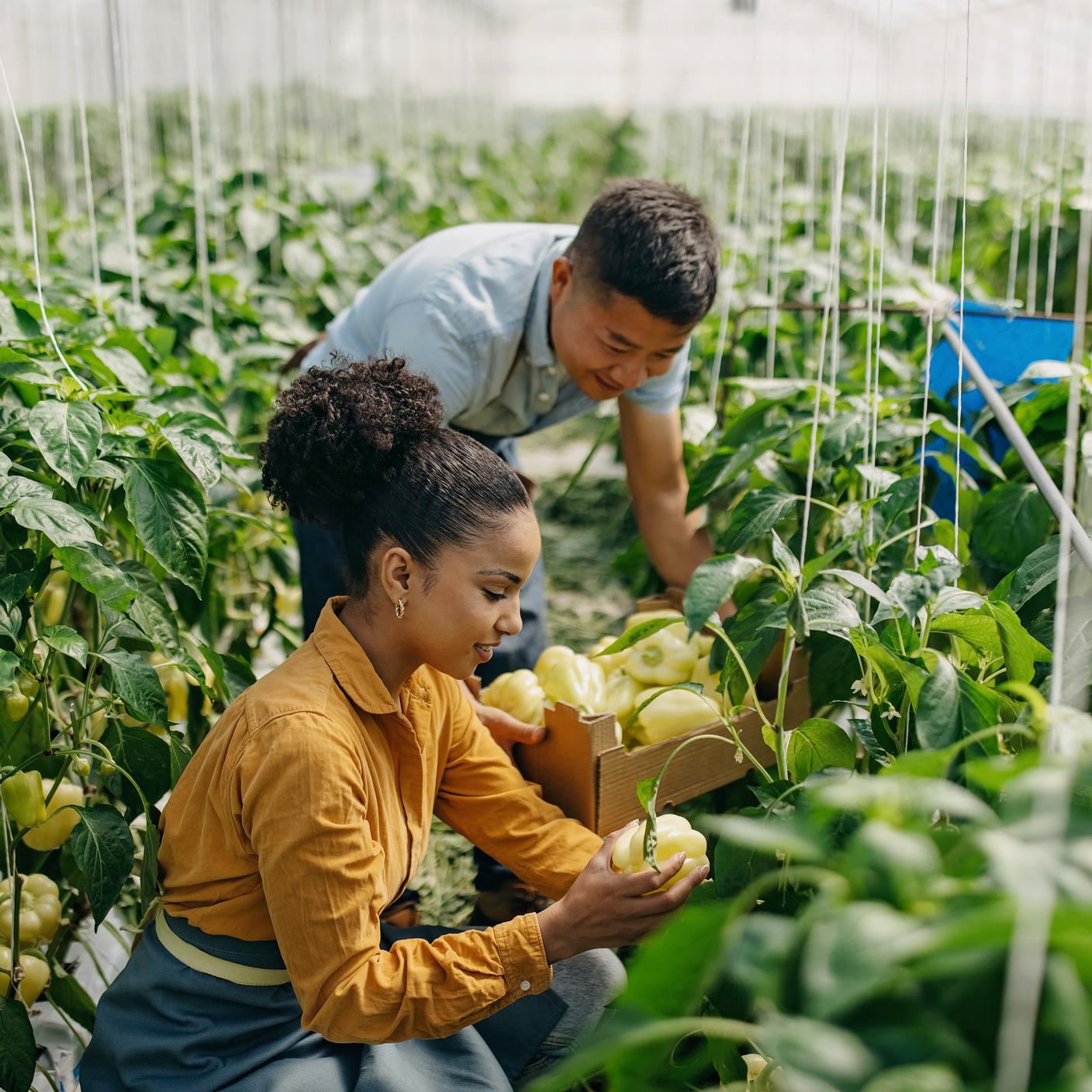The twin challenge of malnutrition and food insecurity remains a crucial global issue, with over 3 billion people, primarily in Africa, Asia, and Latin America, unable to access nutritious diets and 2 billion suffering from micronutrient deficiencies.
Climate change and rising temperatures are seen to be a large contributor to this issue, as yields of staple crops like wheat, grains and rice are falling, as a result of increased heat stress, altered precipitation patterns, and the proliferation of pests and diseases. Additionally, the food/crops that are produced are losing nutrients due to factors such as soil degradation and changes in agricultural practices. Essentially, we face a situation where we have less food to consume and the food we are consuming has less nutritional benefit.
From vegetables to grains, research has found that nearly 43 food varieties have witnessed a decline in nutrients since the mid-20th century. Green beans calcium levels have plummeted from 65mg to 37mg and vitamin A content seen in asparagus has nearly halved. The impact this is having on public health and food security is too great to be overlooked, as a society we need to find solutions to help improve health and food insecurities worldwide.
One such solution gaining invaluable traction is biofortification, a process which involves enhancing the nutritional value of crops at the before harvest to ensure that people from food insecure countries consume the nutrients they need.
An introduction to biofortification
Biofortification is recognised as a nutrition-sensitive-agriculture intervention that can reduce vitamin and mineral deficiency to combat the effects of climate change on crops, and therefore global food insecurities.
Biofortification is a process of forcing or making a food increase the nutrient density prior to harvest. There are many different processes, for example, exposing mushrooms to UV light to increase vitamin D content or changing fish foods to improve the fatty acid content. Regenerative agriculture practices could also be deemed biofortification as improvements of soil health reaps nutritional benefits.
The process ensures that foodstuffs provide the vitamins and minerals consumers need to combat malnutrition and help form a cost-effective, sustainable local farming solution in those countries facing food insecurity.
The process of biofortification involves increasing the nutrient density of food crops. This is achieved through multiple technologies, using plant breeding techniques, utilising improved agronomic practices, or implementing modern biotechnology: without sacrificing any food characteristics preferred by consumers or importantly farmers.
Selective plant breeding techniques are used to produce new varieties of foodstuffs, taking the desired characteristics from crops and artificially creating the strongest next generation. Over time this improves the genetic characteristics of the crop, though it can take a decade or more to yield a single variety and see the positive effects.
Improving agronomic practices involves utilising nutrient rich fertilisers or soil amendments to concentrate particular minerals in plants. This supplements the natural soils and acts as best management practises for optimum crop growth.
Modern biotechnology involves genetically modifying a crop to increase its nutritional contents. Biofortified crops are scientifically shown to reduce micronutrient deficiency and significantly improve health if consumed regularly. The bonus is that farmers are keen to grow these crops because people love to eat foods that will benefit them.
Zambia is already seeing successes. A biofortified Maize which was enriched with vitamin A actually accorded higher value from consumers. The vitamin A orange maize, which is commonly made into nshima, a thick corn porridge, was the preference due to its taste over non-modified maize. This preference increased further when the nutritional benefits were clear.
Following the success in Zambia, the vitamin A maize variety has since been released across numerous countries with food insecurity, including Brazil, Nigeria and Ghana, with the number of biofortified crop varieties increasing year by year.
The Benefits of Biofortification
As biofortified crops are enriched with essential vitamins and minerals, a nutritional benefit is clear. Consuming biofortified foods can improve overall health outcomes, reducing the risk of diet related diseases and promoting well-being in vulnerable communities.
Unlike supplementation or fortification, biofortification integrates nutritional enhancement into the crop's genetic makeup, ensuring sustained nutritional benefits without ongoing interventions, making it a cost-effective and environmentally friendly solution. Biofortified crops are often bred to withstand environmental stresses such as drought, pests and diseases, enhancing agricultural resilience and contributing to food security in regions prone to such challenges.
As a result of cultivating biofortified crops, farmers gain access to nutrient-rich crop varieties that achieve higher yields and market prices which in turn contributes to their economic empowerment and a more stable livelihood.
In 2021, the Philippines became the first country in the world to be able to cultivate a variety of biofortified rice enriched with nutrients to help reduce child malnutrition. The biofortified Golden Rice which contained additional beta-carotene nutrients, which the body converts into vitamin A, was deployed in the country to improve food security.
Around one in five children in the Philippines suffer from vitamin A deficiency (VAD), a deficiency which affects an estimated 190 million children worldwide. The Golden Rice is engineered with 50% of the average requirement of vitamin A and has put the Philippines in the global forefront in leveraging agriculture research to address issues of malnutrition in a safe and sustainable way.
Our role in creating standards for biofortification
After twenty years of enriching diets with biofortification, we want to continue to foster a safe environment and create positive change that reduces the 2 billion people in low and middle income countries suffering from hidden hunger.
At BSI, we create standards to combat global food challenges, using extensive research and engaging with appropriate industries, businesses, consumers and governments to positively affect our planet and people. Therefore, we have partnered with HarvestPlus to author biofortification standards for making food more nutritious and food systems more resilient to climate change.
We understand the importance of introducing biofortification across food insecure countries, not as an immediate solution but as a promising long-term economical solution. Therefore to ensure a food-secure future for all, we recently published a Publicly Available Specification (PAS) for vitamin A-enriched grains, completing a set of three PAS that will facilitate trade in biofortified grains on a global scale, the two previous specifications cover zinc-enriched and iron-enriched grains.





